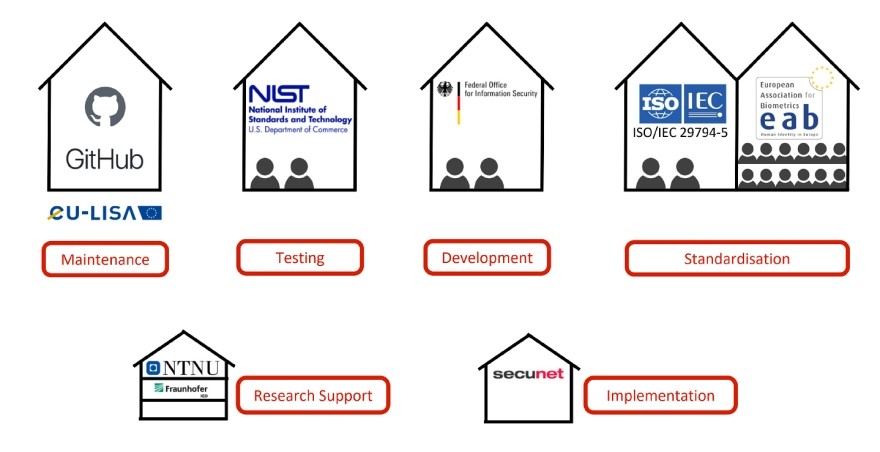Actions
Since August 2024 eu-LISA, through its R&I team, contributes to the maintenance of the OFIQ project.
The project was launched in 2020 under the umbrella of the ISO/IEC SC 37 (ISO/IEC Sub-Committee for the standardisation of biometric technology), and is currently led and developed by the German BSI (Federal Office for Information Security).
OFIQ (“Open-Source Face Image Quality”) is an open-source software that is the reference face image quality assessment tool of standard “ISO/IEC 29794-5:2025 on Biometric Sample Quality – Face Image Data”.
The tool also follows the requirements set in the Commission’s implementing decision (EU) 2019/329 for the Entry/Exit System, which requires that the quality of facial images comply with the standard “ISO/IEC 19794-5:2011 frontal image type” (standard for biometric interchange formats – face image data).
From the launching of the OFIQ project, eu-LISA has been actively involved in the design and development of the tool and, since 2024, plays a role in supporting its long-term maintenance.
Software tools for the assessment of biometric sample quality such as OFIQ, play a major role in the overall operation of the EU Large-Scale IT Systems managed by eu-LISA, from data acquisition, to its processing and storage, to its final use for recognition purposes.
Furthermore, biometric quality measures like OFIQ are valuable assets as self-auditing tools, in order to ensure that the overall quality of the biometric data stored and processed in the large datasets managed by the Agency, complies with the minimum required levels to ensure the correct operation of the systems according to the expected recognition accuracy set in the regulation.
Therefore, biometric quality measures are central to the shared Biometric Matching Service (sBMS) as one of the instrumental building blocks of the interoperability framework that eu-LISA is developing, in order to transition from a siloed architecture of the IT systems managed by the Agency, to an interconnected ecosystem, in compliance with the applicable IO regulation.
OFIQ users can address general questions regarding the tool to OFIQ [at] eulisa [dot] europa [dot] eu (OFIQ[at]eulisa[dot]europa[dot]eu).
